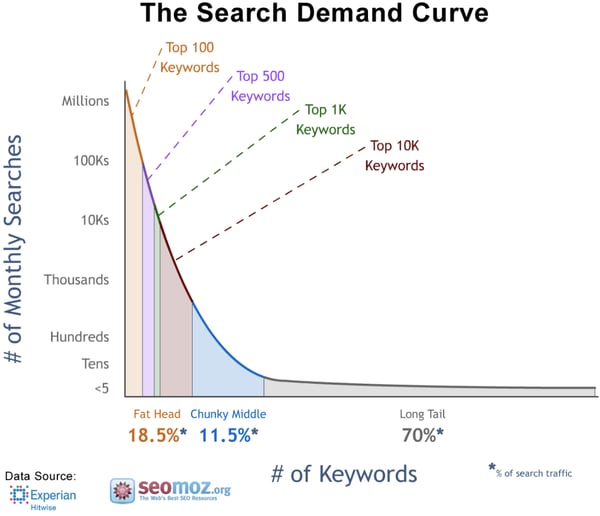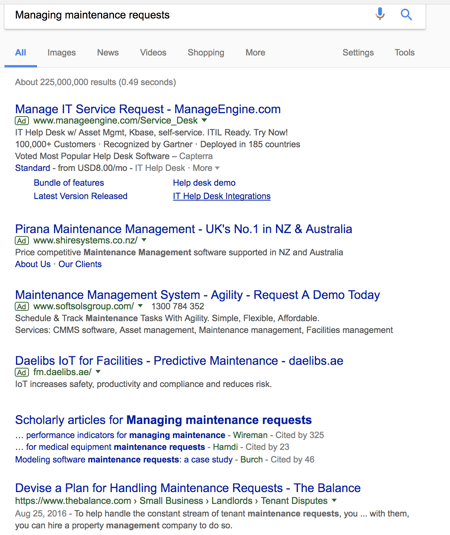Base your research on what your customers want to buy, NOT what you want to sell
As an Inbound Marketing agency, one of the first things we do when we develop a client’s digital strategy is look at their competitors to see what they are doing
After all, it pays to know what you are up against when going into battle.

You want to take a look at their digital footprint to see:
- What campaigns they have running
- What their search visibility is like
- Whether or not they are using Marketing Automation
- How their website is set up, and where their weaknesses and strengths lie
- What opportunities they’re currently missing out on
The questions are though:
- Who are your competitors?
- And how do you find them?
Firstly, there are your real-world competitors
When I mention the topic of competitors, the first thing that comes to mind will likely be the businesses you “bump up against” when you are competing for jobs — the ones who knock you off when you were so sure you had that sale “in the bag”.
They come up in conversation when you follow up a potential buyer (you DO follow up potential buyers, right?), and find out that they’ve bought elsewhere.

Alternatively, you might think of competing businesses in your local area — or businesses with a lot of visibility on their delivery vehicles, signage or advertising.
Yes, they are most definitely your competitors.
But there is another side to identifying your competition that I want to explore with you in this article today.
To get a better understanding of what your competitors are up to, you need to move out of the ‘real world’, and look at what is happening online in the digital world.This is where you can find the less-obvious competitors… the businesses that are slipping in under your radar — and taking bread from your table without you even realising.
But there is more to finding out who they are than meets the eye!
How do you find your DIGITAL competitors?
At first glance, it looks easy.

You just bung some primary keywords into the Google machine to see who comes up, and “Voila!”, there they are.
You’d use keywords such as:
- Swimming pool installer
- Air conditioning installer
- Home builder
- Family dentist
- Computer repairs
- Naturopath
- Or Whatever-It-Is-That-You-Do-For-a-Crust
So, for example, if you are in the aged care business, you might key in “aged care services” to see who you are up against.
And you would get a result like this…

But hold on there Gav. Not so fast!

While there is some validity in doing this to get a feel for who’s who in the zoo, in fact you are missing a key point.
There’s a fundamental flaw with this approach.
When using those keywords, you are taking a ‘me centric’ view on life.
The short, primary keywords that you used are about your favourite subject: you and what you do.
“I sell XYZ, so I’ll search ‘YYZ For Sale’ to see who I’m competing with”.
The trouble is, those primary keyword searches are only being made by a very small percentage of your potential customer base.The majority of your potential buyers:
- ARE NOT searching for what you do
- ARE searching for answers to the problem that they want to solve.

![]()
Searching on the Google machine with those short, primary keywords is keeping you in a false bubble. It fools you into looking in the wrong direction, and missing out on seeing the REAL picture in the REAL world.
If you want to know what your potential buyers are seeing on Google, you have to go looking in the same places as they are!
And here we are again.
Back to that good old Golden Rule of marketing — valid since time immemorial:

To see who you are really competing against, you need to walk in the shoes of your potential customers.
That means using search terms that THEY are likely to
use as they progress through the Buyer’s Journey.

You must walk in the shoes of:
- Real people,
- Who have real problems, and
- Are looking for real solutions
While there will be people (who are further along the Buyer’s Journey) searching for such things as “in-home care”, there will be a lot MORE people who are not there yet. They are still scratching their heads, wondering if mum or dad is OK.
They are simply concerned about a loved one, and will be searching for much broader terms such as:
- Early signs of Dementia
- Making a home safe for older people
- Elderly isolation and loneliness
- Elderly people forgetting things
- Depression in older people
Use these “Long Tail” search terms on Google, and you’ll notice that some of the sites that are coming up are likely to be different from those you saw when you used primary search terms.

In many cases, they may be websites that don’t even show up for the primary search terms — and yet, they will be earning themselves a tremendous amount of traffic and potential customers because their digital footprint is casting:
- The right kind of net out over the water, to
- Catch the right kind of fish.
When you go through this exercise for your own purposes, remember to think about the people in the different stages of the Buyer’s Journey, and the type of search terms that they may use.
For example, let’s say you sell caravans. Your potential customers will have various questions that they need answered as they move through the journey stages of:
- Awareness — When they are first aware that they may like to own a caravan, and are researching about the lifestyle that comes with it.
- Consideration — When they are considering their options about size, weight, bed layout, storage and construction materials. Or perhaps, why/when they might need a caravan with 4WD suspension vs a standard on-road setup.
- Decision — When they are ready to make their buying decision, and are looking at who they should spend their money with.
By the way, to get a deeper understanding of this, click the link below to get our free e-book, ‘Turning Prospects into People”.
It’ll give you insights into how your potential buyers think during the various stages of their Buyer’s Journey — and how you can structure your website content to align with this.
[Pro Tip]: Use your research to find new opportunities
When you are searching on Google for long tail terms that your potential buyers might be using, make sure you keep an eye out for where there’s a lack of information from competing websites.
If you see that the only information available is on government websites, universities or on websites that are not in your local service area – BINGO. That’s an opportunity for you.
For example:
Let’s say you sell a software system for managing asset maintenance.
You figure that “managing maintenance requests” is something your potential buyers might be looking for, so you search it to see what your competitors are offering.
Looking at the results below, the answer is: 5/8 of naff all.
There’s a couple of ads from companies that do what you do; one ad from a mob targeting councils (In New Zealand); and the top organic listing is for people managing real estate and trying not to get into fights and disputes with tenants.

Fantastic! Right there is your opportunity to grab some traffic with a well-crafted blog article that helps your potential buyers with the info they are seeking.
And your competitors won’t even know what you are up to!
Welcome to the world of Inbound Marketing. Happy days!
What to do when you find a competitor
Once you have identified who your competitors are, take the time to wander through their website — again walking in the shoes of a potential buyer.
You will find that many (many!) times, there are lessons to be learned.
- Is there a download button that is hard to find? Then make it easy on your site
- Is there missing information? Then add it to your site
- Is their ‘next step’ offer too confronting? Then test a ‘low bar’ offer on your site
- Is there a good design feature that engages you? Then figure out how to do something similar-but-better on your site
Also, if they have any downloads or Premium Content offers, sign up for them to get a feel for their Marketing Automation, and whether they are on the ball or not.
There’s always something to be gleaned from a competitor’s website, so be thorough in your investigations.
Want to use Inbound Marketing to out-market your competitors?
If you’d like help with your research and with setting up your Inbound marketing strategy to capitalise on new opportunities, call Crockford Carlisle on (07) 3891 3800.
You won’t just hear an agency sales pitch.
We are genuinely interested in helping you and your business. We’ll be more than happy to have a chat on the phone about your objectives and challenges.
Tell us about your competitors, and we’ll give you some ideas on how you can use Inbound marketing to gain an advantage and reach your growth objectives.
We assist businesses throughout Australia, and we’ll be happy to help you to out-market your competitors – no matter where you are located.



















